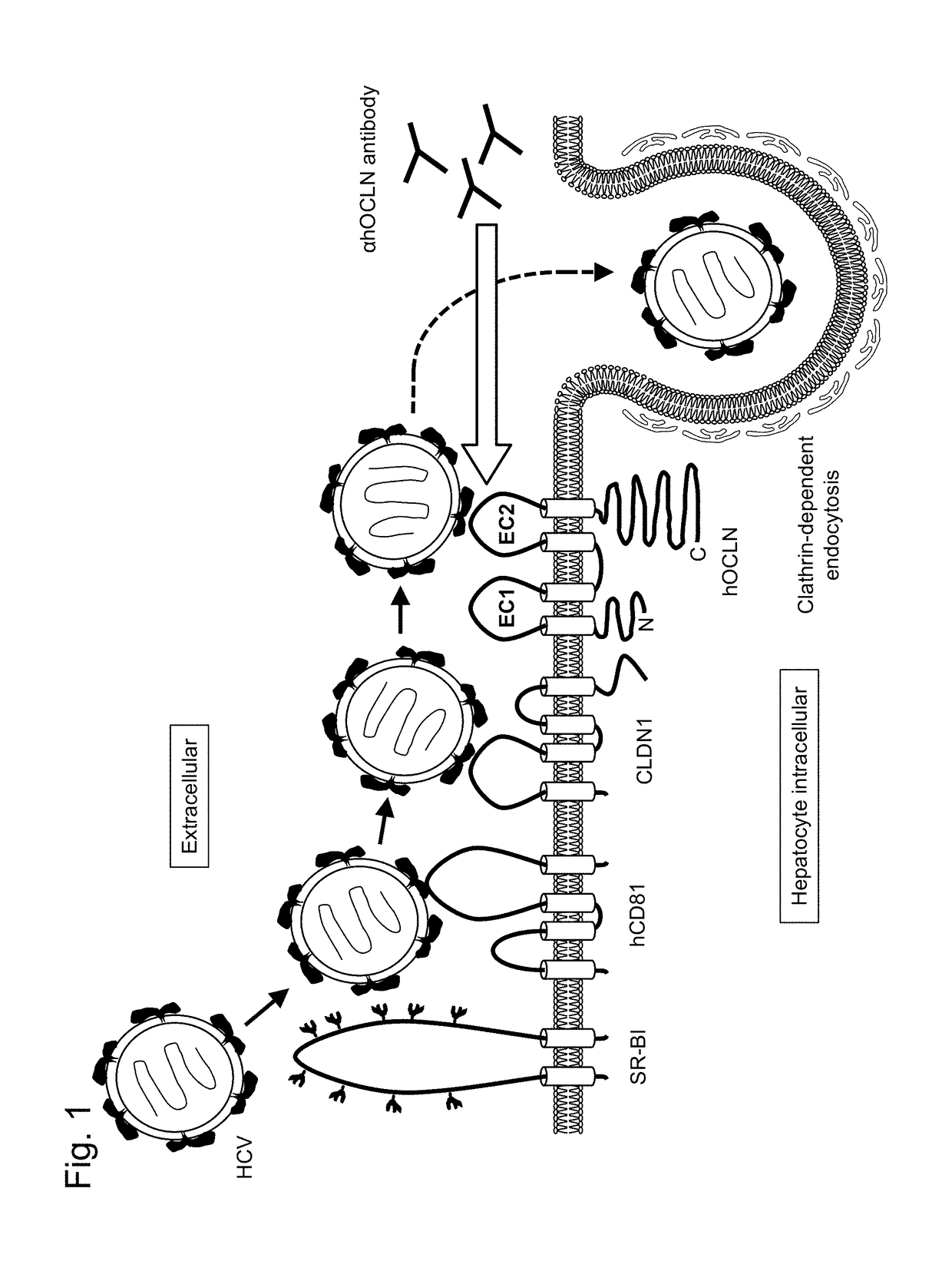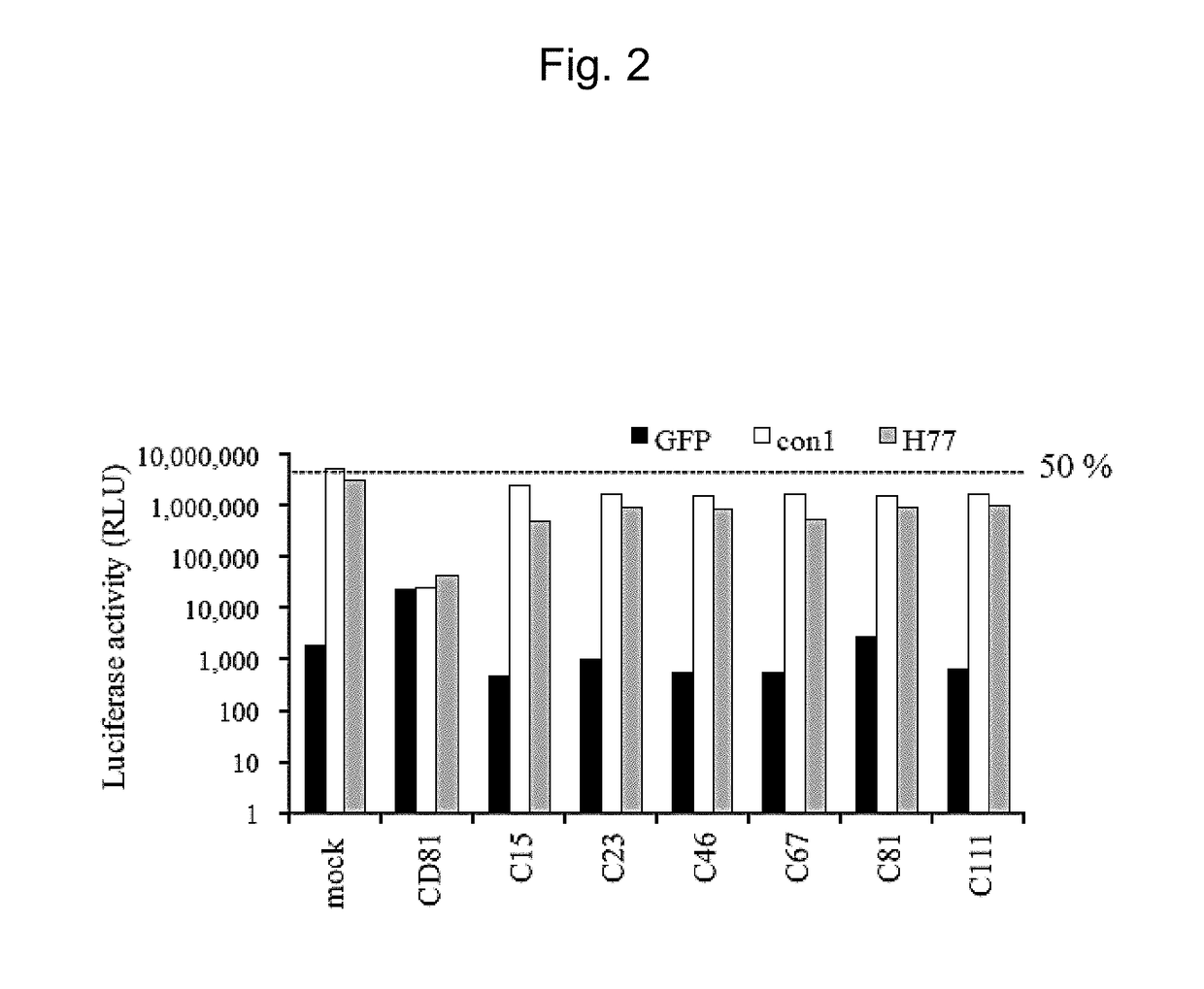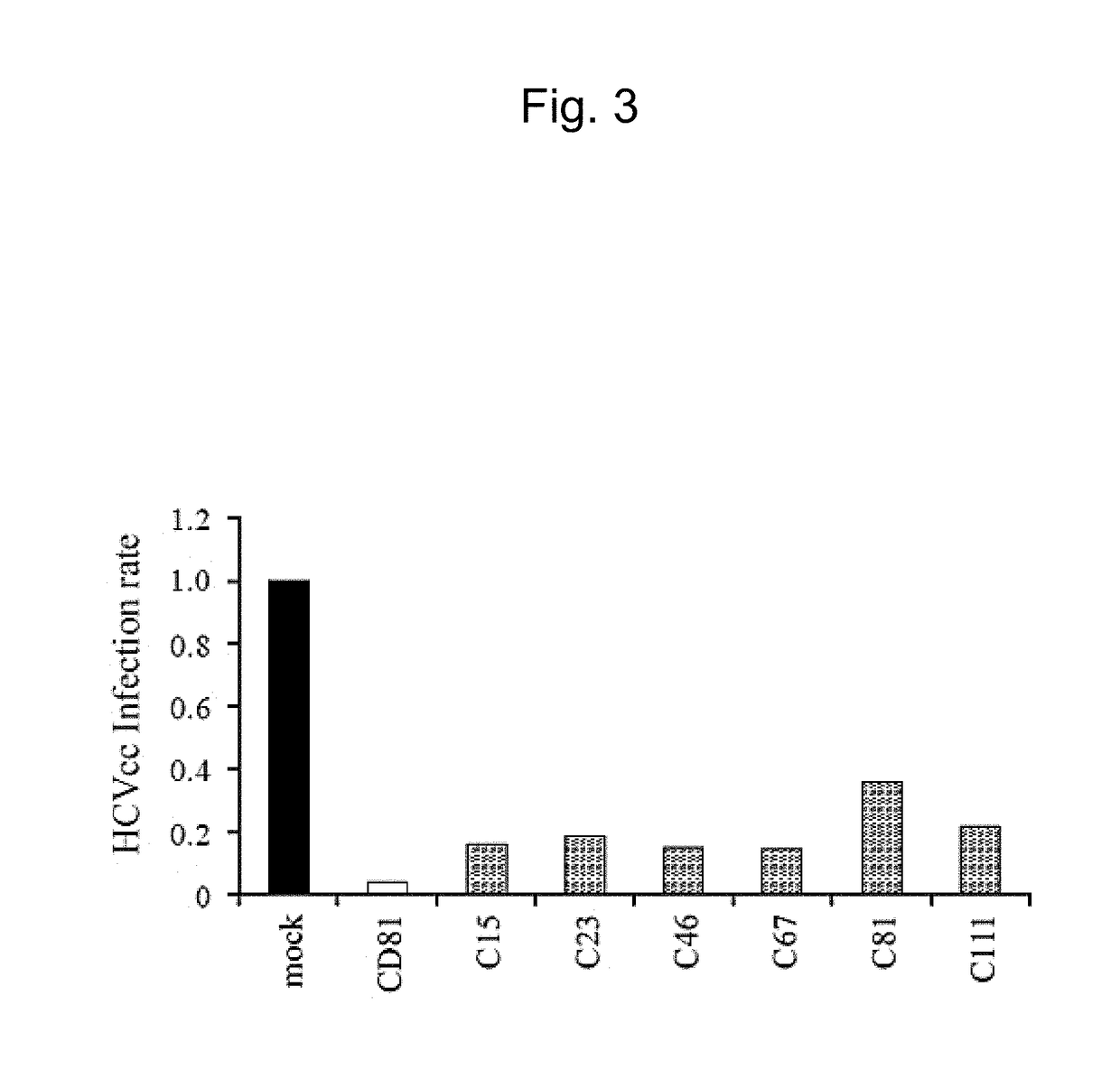Inhibitor of hepatitis c virus infection
a technology of hepatitis c virus and inhibitor, which is applied in the field of antibodies, can solve the problems of no report regarding the direct binding of hcv to the occludin protein, no research and development has been conducted for any inhibitor of hcv infection against the occludin protein
- Summary
- Abstract
- Description
- Claims
- Application Information
AI Technical Summary
Benefits of technology
Problems solved by technology
Method used
Image
Examples
example 1
(Object)
[0160]An object is to prepare an anti-human occludin monoclonal antibody.
(Method)
[0161]A region that was a portion of the second extracellular domain of human occludin and corresponded to positions 214 to 230 was used as an antigen. The peptide was synthesized on the basis of information on the amino acid sequence (SEQ ID NO: 7: ALCNQFYTPAATGLYVD) (Medical & Biological Laboratories Co., Ltd.). Next, in order to enhance antigenic stimulation, keyhole limpet hemocyanin (KLH) (Medical & Biological Laboratories Co., Ltd.) was linked as a carrier protein to the N terminus.
[0162]Antibody preparation was performed by the hybridoma method. The basic method conformed to a routine method. Four special disease mice (Medical & Biological Laboratories Co., Ltd.) were subcutaneously immunized a total of 3 times at 2-week-intervals with 50 μg / shot / mouse of the antigen at a concentration of 1 mg / mL. The spleens were harvested from the individuals thus immunized, and B cells were collected. ...
example 2
(Object)
[0164]An object is to evaluate the anti-occludin monoclonal antibodies obtained in Example 1 for their inhibitory effects on HCVpv infection.
(Method)
[0165]The hybridoma cells producing each antibody obtained in Example 1 were cultured at 37° C. in the presence of 5% CO2 for 3 days in RPMI (Wako Pure Chemical Industries, Ltd.) medium supplemented with 20% FBS (GIBCO / Thermo Fisher Scientific Inc.) and 1% penicillin / streptomycin (GIBCO / Thermo Fisher Scientific Inc.). The culture supernatant obtained after the culture was used as an anti-occludin antibody-producing clone-containing medium.
[0166]A well differentiated human liver cancer-derived cell line Huh7.5.1 cell line having high sensitivity of HCV replication (kindly provided by professor Matsuura from Research Institute for Microbial Diseases (Osaka University)) was used as host cells for HCV infection. The Huh7.5.1 cells were cultured at 37° C. in the presence of 5% CO2 in D-MEM high Glucose (Sigma-Aldrich Co. LLC) medium ...
example 3
(Object)
[0172]An object is to evaluate the anti-occludin monoclonal antibodies obtained in Example 1 for their inhibitory effects on HCVcc infection.
(Method)
[0173]Huh7.5.1 cells were used as host cells for HCV infection, as in Example 2. The cells were cultured at 37° C. in the presence of 5% CO2 in D-MEM high Glucose (Sigma-Aldrich Co. LLC) medium supplemented with 10% FBS (GIBCO / Thermo Fisher Scientific Inc.).
[0174]JFH-1 strain-derived HCVcc (cell cultured HCV; genotype: 2a) (Matsuura Y, et al., 2001, Virology, 286: 263-275) established as a laboratory HCV strain (kindly provided by professor Matsuura from Research Institute for Microbial Diseases (Osaka University)) was used as HCV.
[0175]500 μL of the medium described above was prepared in each well of a 24-well flat-bottomed plate. The Huh7.5.1 cells were inoculated at 1×103 cells / well and then incubated for 48 hours. After medium replacement, the anti-occludin antibody-producing clone-containing medium containing each of the 6 ...
PUM
| Property | Measurement | Unit |
|---|---|---|
| molecular weight | aaaaa | aaaaa |
| dissociation constant | aaaaa | aaaaa |
| dissociation constant | aaaaa | aaaaa |
Abstract
Description
Claims
Application Information
 Login to View More
Login to View More - R&D
- Intellectual Property
- Life Sciences
- Materials
- Tech Scout
- Unparalleled Data Quality
- Higher Quality Content
- 60% Fewer Hallucinations
Browse by: Latest US Patents, China's latest patents, Technical Efficacy Thesaurus, Application Domain, Technology Topic, Popular Technical Reports.
© 2025 PatSnap. All rights reserved.Legal|Privacy policy|Modern Slavery Act Transparency Statement|Sitemap|About US| Contact US: help@patsnap.com



